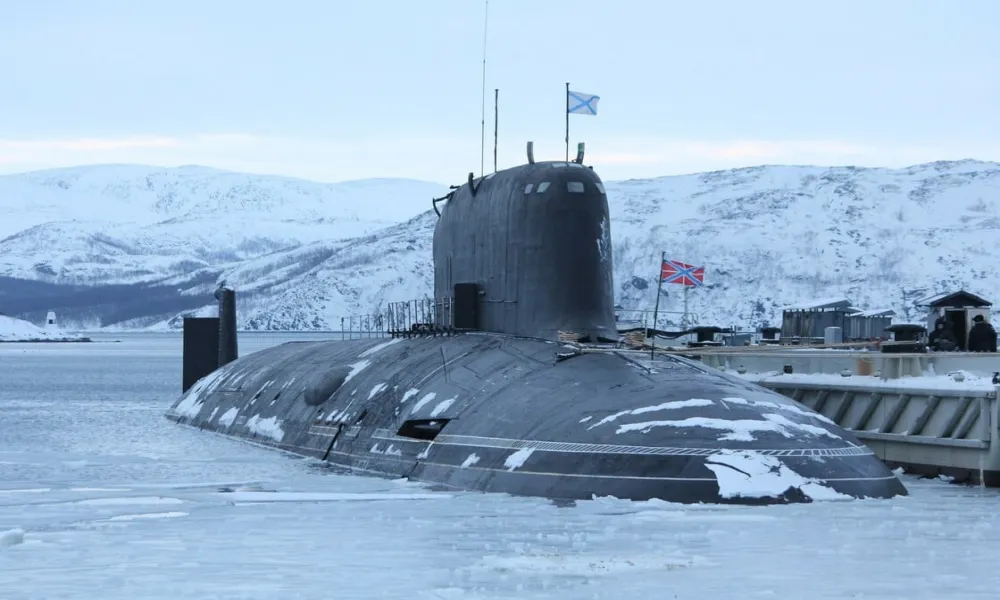Russia has constructed an extensive underwater surveillance system beneath the Arctic Ocean to protect its fleet of nuclear-powered submarines using technology sourced from companies based in the United States and Europe.
According to recently uncovered financial records, court documents and statements from Western security officials, the network known as “Harmony” was developed through a complex web of front companies acting on behalf of the Russian military-industrial complex.
An invisible shield beneath the Barents Sea
Through this covert operation, Moscow acquired advanced sonar systems, remotely operated underwater vehicles capable of descending to depths of 3,000 metres, state-of-the-art seabed antennas and a fleet of vessels registered as commercial or research ships but used to install military equipment on the Arctic seabed.
Harmony is a central element of Russia’s nuclear deterrence strategy: a hidden array of sensors placed across the Barents Sea and surrounding icy waters, where submarines armed with intercontinental ballistic missiles operate. The system’s purpose is to detect approaching American submarines near Russia’s “bastion” naval zones, ensuring the country can launch a retaliatory nuclear strike even if its land-based facilities were destroyed.
The supply chain and the Cyprus connection
At the heart of the operation lies Mostrello Commercial Ltd, a Cyprus-based company within the European Union that allegedly acted as a front for Russia’s defence sector. The firm reportedly channelled tens of millions of dollars in sensitive equipment purchases.
Court filings in Germany revealed that Mostrello sourced components from suppliers in the United States, the United Kingdom, Norway, Sweden, Italy and other NATO countries. The scheme came to light in 2021, when German authorities tipped off by the CIA uncovered a procurement network violating export-control regulations.
Following raids on company premises, the United States imposed sanctions on Mostrello and several affiliated firms linked to the Russian Ministry of Defence. When Dutch public broadcasters visited the company’s offices in Nicosia last September, they found an abandoned building with open doors and littered corridors, signs that those involved had fled hastily.
The Snyakin case
The investigation centred on Alexander Snyakin, a 56-year-old Russian national based in Germany, who was sentenced to five years in prison for breaching trade restrictions. Snyakin was accused of coordinating equipment purchases on behalf of Mostrello.
According to prosecutors, the goods were first shipped to Nuremberg to avoid scrutiny from Western suppliers, then rerouted to Russia.
How 'Harmony' works
Naval analysts describe Harmony as an intricate web of seabed sensors that record underwater sounds and submarine movements. Data are transmitted via fibre-optic cables and underwater antennas to surface monitoring stations.
The system enables Russian commanders to detect foreign submarines and perform evasive manoeuvres, a tactic known as
“delousing.”
Former US Navy officer Bryan Clark said the network allows Russia to operate its nuclear submarines “without being detected or harassed by NATO forces.” Stretching from Murmansk to Novaya Zemlya and the Franz Josef Islands, it forms an underwater “wall” shielding the Northern Fleet’s strategic bases.
Circumventing sanctions
The construction of Harmony underscores Moscow’s ability to bypass Western sanctions and export-control regimes, strengthening one of the most critical pillars of its strategic deterrent. Despite the extensive restrictions imposed since 2014, the case illustrates how loopholes and enforcement delays have allowed Russia to continue sourcing advanced military technology.
Western intelligence officials view this as a serious setback for US and NATO security. Norwegian Vice Admiral Nils Stensønes warned that Russia has developed “highly sophisticated procurement networks” involving legitimate European firms, concealing the true end-use of their products.
